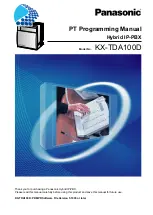
62
|
Axm ii / AxP
Configurable Motion Control Platform
7.1
GeneRAl
INfOrMaTIONS
The AxM II / AxP platform has been designed with two completely separate power supplies.
The power circuit is fed by the mains voltage, without preload timing; while the control
circuit needs to be fed by a separate unregulated 24 V supply. This is converted, by the
internal switching regulator, in order to supply all internal services and motor encoders at
the appropriate voltages.
This design solution overcomes all uncertainties of timing and synchronisation between
drive and main control cabinet, by unifying the same power supply for all services, such as
sensors, PLCs, switches and latches. In this way, all data are memorised and reset at the
same time, and a simple back-up is possible for all machine information without backing up
the main power too.
The power stage without preload (and without storage capacitors in AxM range) ensures that
the main power is available to the drive without delay whenever the mains power switch is
operated.
7.2
emeRGenCy sToP
WITH INerTIal
lOaDS; SafeTy brakeS
Many applications involving brushless servo drives move high inertia loads in short, fast
cycles (typical example are Cartesian robots or pick and place machines). When the load is
moving at top speed, a significant amount of energy is stored in the load, so that a sudden
deenergization of the brake could be dangerous. It is therefore essential that, in the event of
an emergency, the load is braked as quickly as possible.
To solve this problem, the use of a servo motor with a safety brake is sometimes considered.
The simple use of a safety brake, however, is wrong and dangerous for the following reasons:
»
Safety brakes designed for servo motors are stationary brakes. They are designed ex-
clusively to hold a motor still when deenergized, typically for vertical translations. They
are not designed to absorb any significant energy, also because their torque to size ratio
is extreme. If used to stop a motor, instead of keeping it at standstill, they would wear
quickly and eventually seize.
»
The braking torque of an electrically driven brushless motor is always higher than that of
the brake and the corresponding braking time is shorter.
Consequently, the function “emergency stop” must be realized as follows:
the emergency condition, because of safety regulation, must turn off the mains power to
the drive; however, the auxiliary 24 V must be mantained, so that the drive is alive and can
brake;
at the same time, the emergency condition must generate a 0 speed reference that brakes
the motor at maximum torque, using the kinetic energy of the motor.
The drives regenerates energy from the motor to the DC bus until the motor speed is so low
that the motor back EMF is less than approximately 10 V. At this speed, the DC Bus voltage
falls, the drives locks in undervoltage and the motor is abandoned.
If the translation is vertical, and the motor is equipped with safety brake, only in this mo-
ment, the safety brake can be released. To time the release, the relay contacts in the drive
can be used. The relay is switched by the DC Bus undervoltage, that corresponds to motor
almost at standstill. When the emergency stop logic is realised as described, the machine
encoders are kept alive and no index search or initialisation is required when normal opera-
tion is resumed.
AxM-II (2011-10).indd 62
18/10/11 15:15
Summary of Contents for AxM II 04.09.4
Page 4: ...AxM II 2011 10 indd 6 18 10 11 15 15...
Page 20: ...AxM II 2011 10 indd 22 18 10 11 15 15...
Page 24: ...AxM II 2011 10 indd 26 18 10 11 15 15...
Page 28: ...AxM II 2011 10 indd 30 18 10 11 15 15...
Page 32: ...AxM II 2011 10 indd 34 18 10 11 15 15...
Page 58: ...AxM II 2011 10 indd 60 18 10 11 15 15...
Page 64: ...AxM II 2011 10 indd 66 18 10 11 15 15...
Page 70: ...AxM II 2011 10 indd 72 18 10 11 15 15...
Page 80: ...AxM II 2011 10 indd 82 18 10 11 15 15...
Page 83: ...Appendix 85 AxM II 2011 10 indd 85 18 10 11 15 15...
















































